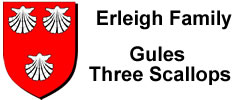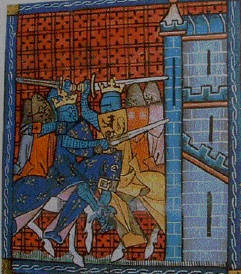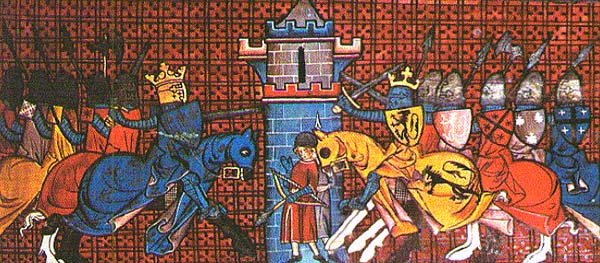Earle Surname Heraldry
Heraldry is a broad term, which encompasses the design and display of armorial bearings. Armorial bearings usually include a coat of arms on a shield, helmet, and crest, together with any accompanying devices, such as supporters, badges, heraldic banners, and mottoes.
The primary element of a heraldic achievement is the shield, or escutcheon, upon which the coat of arms is depicted.
Heraldic symbols began to appear on shields in the 11th and 12th centuries. A basic design for a coat of arms showed the “family” or clan to which you belonged. We can see that in modern times each nation has a “Flag” with the colors or design of that nation and differentiates one nation from another. People of a particular nation identify with their Flag and rally or fight under their nation’s emblem.
In medieval times a design on your shield in battle or your crest displayed on your dwelling or clothing showed the lineage or family group you belonged to. This was mainly used by those with titles and lands, or by knights who went to battle. The designs would develop or be modified over time but the underlying basic design would be similar.
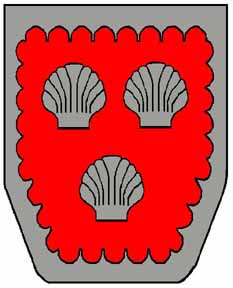
The de Erleigh Coat of Arms
John de erleigh was the first of his name
A Knightly Family in British History
There are many mentions of this family in British history beginning from the time of King Henry the Second (who was crowned A. D. 1154) moving forward. The Family held lands in Beckington, in the County of Somerset. This is confirmed by Sir Bernard Burke, who, in his account of the family in the “Dictionary of the Landed Gentry of Great Britain and Ireland,” says: “So far back as the seventh (year of the reign of) Henry the Second, John de Erlegh paid five marks for the scutage of his lands at Beckington.”
The landholdings of the de Erleigh family in the county of Berkshire included, at various times, the manors of Erley Regis (Whitenights) and Maiden Erley in the hundred of Sonning, the manors of Charlton, South Denchworth, and Cleets in the hundred of Wantage, the manor of Midgham in the hundred of Reading and the manor of Barkham in the hundred of Charlton. In the Doomsday Book, the manor of Erley (Herlei) is assessed at 4 hides (a “hide” is traditionally taken to be 120 acres).

The original “de Erleigh” Shield or coat of arms.
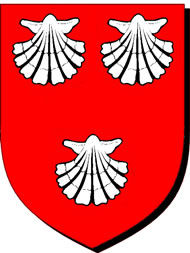
Heraldic or Family Designated designs came into general use among western nobility in the 12th century (the 1100’s). Early heraldic designs were personal, used by individual noblemen (who might also alter their chosen design over time).
Arms become hereditary by the end of the 12th century, in England by King Richard I during the Third Crusade (1189–1192).
Image of a tapestry that depicts John d’ Earley II with King Richard I at Gisars in 1198 (see the illustration below in which John d’Earley is the second knight from the right).
A coat of arms is a heraldic visual design on an escutcheon (i.e., shield), surcoat, or tabard. The coat of arms on an escutcheon forms the central element of the full heraldic achievement which in its whole consists of shield, supporters, crest, and motto. A coat of arms is traditionally unique to an individual person, or family line.
John de Erleigh II fought with King Richard in France between 1195 and 1198, both returning to England briefly.
This is an image of a tapestry that was created to commemorate a battle at Gisars in 1198 between the French and the English. The English are on the right-hand side, and first in line is King Richard I.
The fourth visible shield behind King Richard is the “de Erleigh” Shield fighting with King Richard to defeat the French.
John de Erleigh II fighting as a Knight with King Richard
In addition to the lands, they held in Erleigh the family also held considerable property in the of County of Somerset which was their principal residence. These possessions included the county manors of Beckington, Durston, Babcary, Michael’s Church, the manor and hundred (there were 100 hides or approximately 1200 acres, in each hundred) of North Petherton, and the manor of Somerton (also referred to as Somerton-Parva and Somerton-Erlegh).
